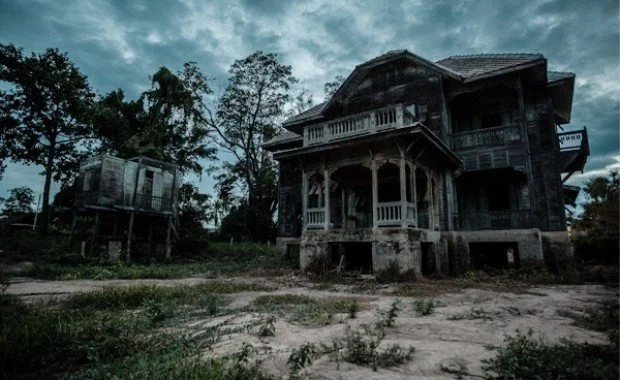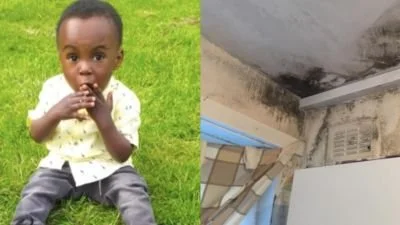Are you seeing ghosts?
(Image credit: Witthaya on iStockPhoto)
Haunted houses have become popular over the years for those seeking thrills during the Halloween season. They’re also a common trope and nexus of many horror movies coming out of Hollywood, and even online stories such as ‘creepypastas’ or paranormal investigation TV series. Hauntings are usually described as unusual somatic experiences, such as hearing voices or feeling various sensations (physically and/or emotionally) or even physical events, like objects moving by themselves or knocks on various surfaces. According to BMG Research, around 1/3 of adults in Britain believe in ghosts or other paranormal activity. Their research conducted in 2017 showed that of those who believe in ghosts or are still unsure, “40% reported seeing or feeling the presence of paranormal activity in the past, with a further 24% saying that they may have had a paranormal experience”.
So why is it that such occurrences are seemingly more frequent than expected? While believers may feel that the paranormal truly exists, sceptics draw on the expertise of scientists for other explanations. Psychologists suggest that “a belief in the supernatural serves as a protection from unwanted realities” such as job loss or a death in the family, or other distressing events that may occur. They also point to the explanatory power of the paranormal, filling in knowledge gaps where science may fail to explain an occurrence.
However, the field of Civil and Environmental Engineering may now have found another reason for why some people have had alleged paranormal experiences. According to Dr Shane Rogers and his team at Clarkson University in New York, USA, there seems to be a link between toxic indoor mould and psychological effects that are similar to experiencing hauntings. The BBC reports that “aspergillus mould, which is found in damp buildings, can cause shortness of breath and optic nerve inflammation, causing dark shapes to float across people’s vision”. Black mould has also been found to increase feelings of fear in lab-tested mice. From his and his team’s research, Dr Rogers found that many older-built structures are often reported to have mould - 13 places within their data set that were considered to be haunted had evidence of mould and poor indoor air quality.
(Image credit: Imaginfires)
Unbeknownst to many, poor indoor air quality can be caused by the most mundane activities. Simply cooking, cleaning, or owning a pet can create various air pollutants inside our homes, and many of these particles are essentially invisible to the naked eye. Furthermore, many homes built today are designed to be as airtight as possible in order to stay energy efficient. Inevitably, this can cause high humidity levels due to lack of ventilation and can turn into mould from simply showering or cooking, as particles can spread through to other rooms. Though mould can also grow in older homes and buildings due to exposure to the weather, but also the materials used to create them. This combination can often exacerbate mould growth, especially if the materials are prone to moisture retention, such as heartwood.
But what is more frightening than what is based in actual reality? The reality that many renters are currently dealing with is continuous damp and mould in their homes. Research conducted by Ferguson et al. based at UCL in 2021 shows that those from low socioeconomic
status groups are “more likely to live in higher density flats and smaller dwellings and areas of London with higher levels of air pollution.” These homes are usually poorly ventilated – while this can prevent outdoor pollution from coming in, this benefit is offset by how these homes become a trap for indoor pollutants coming from activities such as cooking and smoking. This same research highlights that an assessment by surveyors from the English Housing Survey show that “risk of damp and mould is higher in the lowest quintile income groups (29.1%) tan in the highest (7.7%)”. It can be agreed that poor air quality is a sign of bad housing conditions, and so it should be noted that there is a significant link between poverty and poor housing. The most vulnerable in our society are more likely to live in such unhealthy homes, especially if they feel there is no alternative.
Charities and organisations have long been calling for the Government and other political parties to endorse the creation of more homes, and we should also be advocating for them to be fit for habitation. Air quality must be considered either through retrofitting plans or designed into the construction process. This is particularly important for cities such as London, “where outdoor pollution is at its worst [and] various contaminants and chemicals can easily filter into properties and circulate”. A report by the UN in 2017 showed that 44 UK cities, including London, failed to meet air quality standards as the air was labelled “too dangerous to breathe.”
Following the death of Awaab Ishak in 2020, the consequences of leaving mould unremedied have been made astoundingly clear. Subsequently, the Government published guidance earlier this year which states that landlords must take damp and mould “with the utmost seriousness and act promptly to protect their tenants’ health” and that tenants should not be blamed for any damp and mould. It also states that it is not caused by ‘lifestyle choices’ and it is the duty of the landlord to
address issues arising from inadequate ventilation. Notably, in the Ministerial foreword to this guidance, Health and Social Care Secretary Steve Barclay and Levelling Up Secretary Michael Gove state that the Government is “committed to ensuring a decent standard of housing for tenants in the social and private rented sectors”. They proclaim in this reiterate that the Government aims to address this through the Renters Reform Bill.
However, the mystery that remains is when this promise will be delivered to renters. The public have been waiting since 2019 for progress to be made to secure the rights of renters across the country. Yet we are still facing delays to the Renters Reform Bill due to the recently announced reforms to the courts, as lobbied for by the National Residential Landlords Association (NRLA). The very real and concrete ‘haunting’ for tenants is the fallout from disrepair and poor conditions which remain unresolved.
If you support our mission and the campaigning that we do, please consider:
Joining the Renters Reform Coalition campaign via this link to urge the Government to make progress with the Renters Reform Bill;
Donating whatever you can so that we can continue helping those at the sharpest end of the Housing Crisis by clicking here; and
Signing up to our monthly newsletter using this link.
Thank you for your support.
—————
Sources:
‘BMG Halloween Poll: A third of Brits believe in Ghosts, Spirits or other types of Paranormal Activity’, BMG Research (2017)
https://www.bmgresearch.co.uk/bmg-halloween-poll-third-brits-believe-ghosts-spirits-types-paranormal-activity/
‘Can “ghosts” cause bad air? Poor indoor air quality and ‘sightings’”, ScienceDaily (2015)
https://www.sciencedaily.com/releases/2015/03/150331121251.htm
‘Systemic inequalities in indoor air pollution exposure in London, UK’, Ferguson et al (2021) Buildings and Cities
https://storage.googleapis.com/jnl-up-j-bc-files/journals/1/articles/100/submission/proof/100-1-3601-1-10-20210507.pdf
‘The science behind seeing ghosts’, BBC News (2023)
https://www.bbc.co.uk/bbcthree/article/f8ce7277-5945-470a-b1ad-0c637d8265c1
‘Things That Go Bump in the Literature: An Environmental Appraisal of “Haunted Houses”’, Dagnall et al. (2020) National Library of Medicine
https://www.ncbi.nlm.nih.gov/pmc/articles/PMC7304295/
‘Understanding the impact that poor indoor air quality can have on residents’, Inside Housing (2023)
https://www.insidehousing.co.uk/sponsored/understanding-the-impact-that-poor-indoor-air-quality-can-have-on-residents



